Green Your Health and Beauty Routines
Save money and help the planet every damn day
Health and beauty products, like clothing and other consumer goods, can be very harmful to the environment.
The difference? Health and beauty products feel like (or are!) necessities. Cotton pads for removing makeup, shampoo and conditioner or body wash, even hand soap and toothpaste can have a negative impact on our world.
But for all of these necessities, there are environmentally friendly alternatives. Here are five ways anyone can make their health and beauty routines more sustainable.
Sustainable Health and Beauty Routines
As an added bonus, all of these tips could also help save you money. Plus, we’ll share how you can amplify your positive impact on the environment below just by tapping the Mogo Visa* Platinum Prepaid Card (aka the MogoCard) (seriously!).
Buy Reusable Cotton Pads
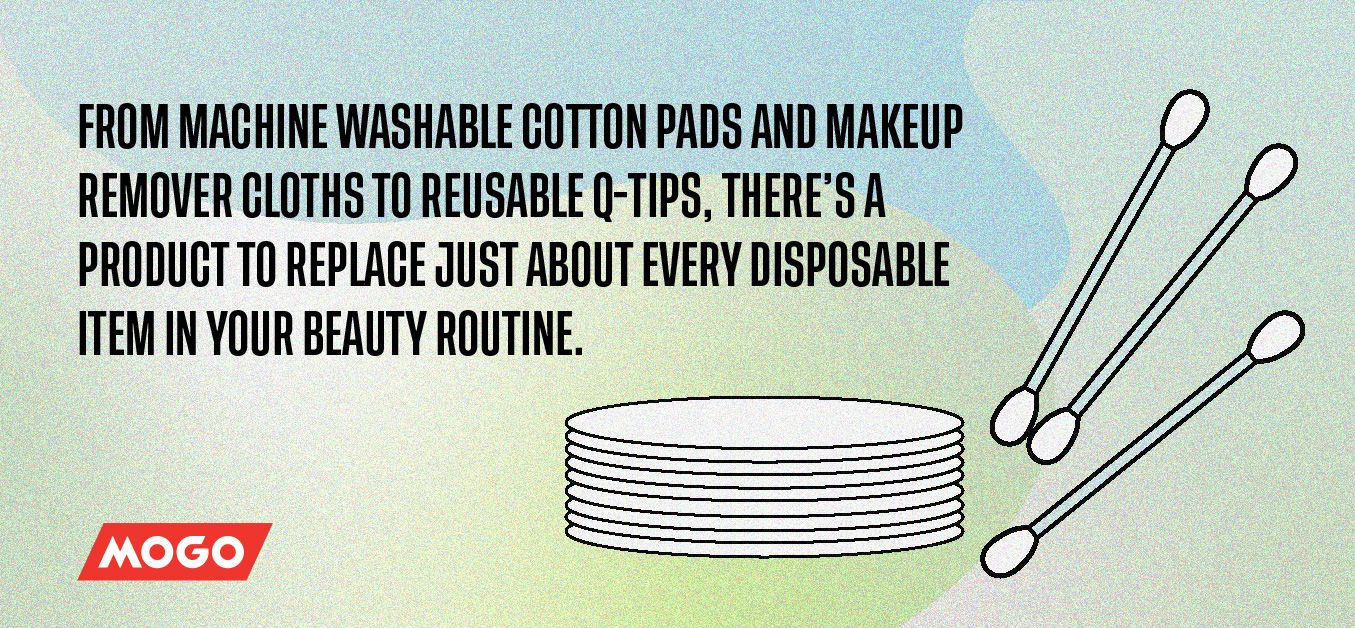
Same with other disposable clothlike products—think makeup remover pads, or other kinds of wipes. You buy them en masse, typically wrapped in plastic packaging, use each just once, and create a ton of waste by the time you’ve used the package up.
There’s another way!
A handful of industrious companies have launched sustainable alternatives in the last five years. From machine washable cotton pads and makeup remover cloths to reusable Q-tips, there’s a product to replace just about every disposable item in your beauty routine.
The bonus: you can save money. Instead of replenishing your cotton pad supply every month for $3, you might spend $10 and keep your reusable pads for years. The planet wins, and so does your wallet.
Buy Local (or Sustainably Transported) Goods
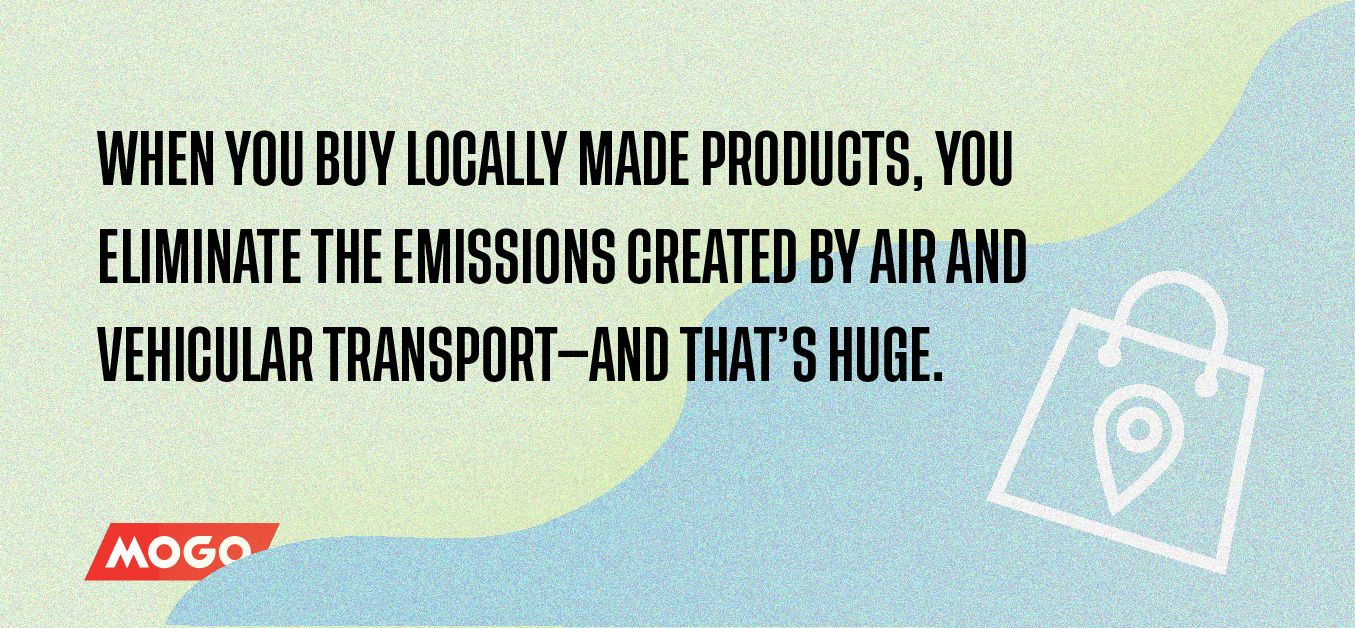
The manufacturing and transport of health and beauty products contributes to pollution and harmful gas emissions. As illustrated by the WWF’s discussion of cotton production, linked above, many of our products are unsustainable from the very beginning.
The alternative? Shop local, or with a trusted company. When you buy locally made products, you eliminate the emissions created by air and vehicular transport—and that’s huge.
If you don’t like any of the products made near you, consider purchasing goods from a company that is already committed to fighting climate change. They might offer services like carbon neutral transportation, or tree planting (like us!) to leave the world better than they found it.
And if your favourite companies aren’t yet committed to saving the planet, tell them to get on it! Companies typically respond to the demands of their customers, so start leaving comments on Instagram and writing in to request sustainable practices.
Shut Off the Tap
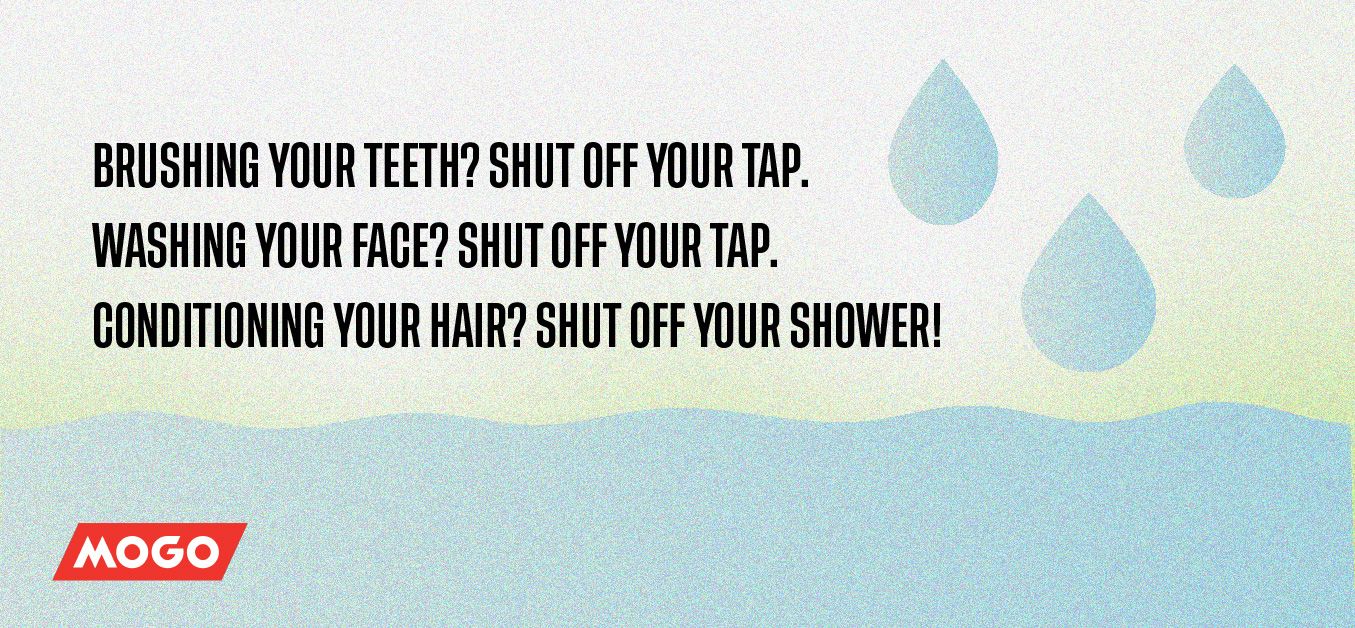
Brushing your teeth? Shut off your tap. Washing your face? Shut off your tap. Conditioning your hair? Shut off your shower!
Water wastage is a massive problem and way too many people aren’t doing enough to address the role they play.
You’ve heard this tip before, we’re sure. But have you listened? Do you turn your water off while you’re not using it?
Because, mate, if you’re not. We might need to have words. (Those words are “shut off your tap already!”)
Opt For Sustainable Containers
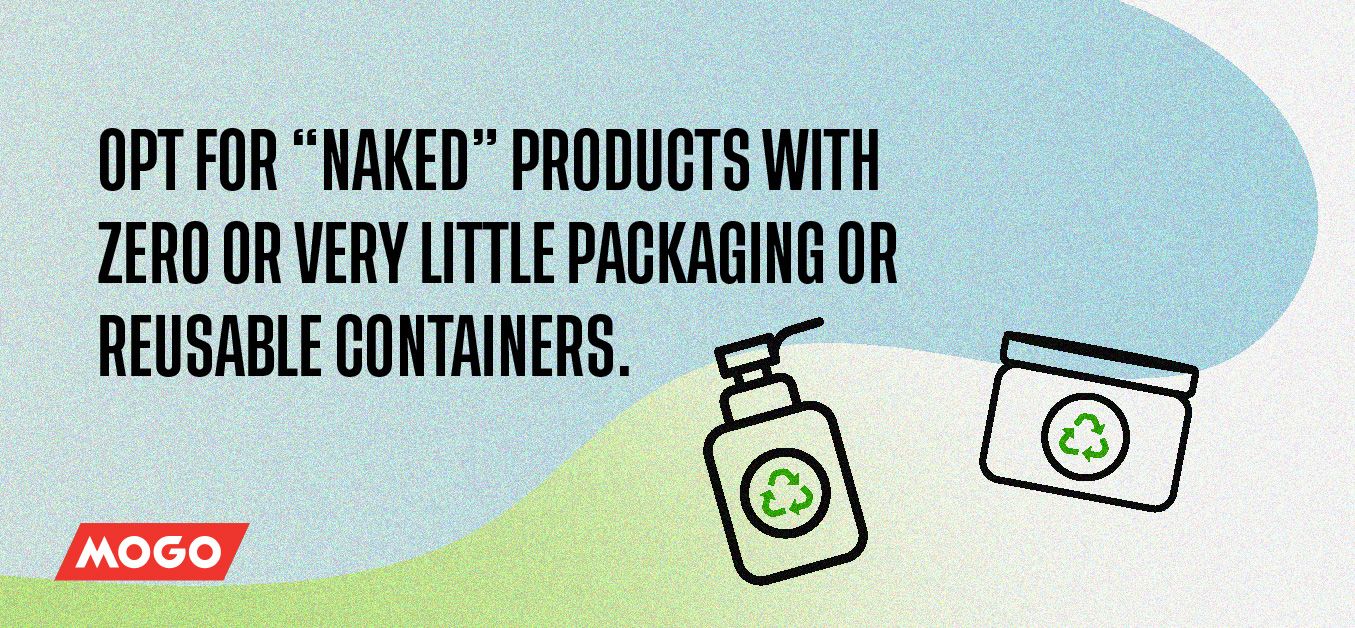
Here’s a big one that many folks have yet to embrace: sustainable packaging and containers. This could take a few forms.
You could opt for “naked” products, which have zero or very little packaging. These include things like shampoo bars and hand soap—products which stay together and can be used without ever needing to be in a container. Buy one of these bad boys from a local producer (and shut off your tap while using it) and you are making some serious strides.
Other products need containers—think liquid soaps and conditioners, or face cleansers. The trick with having reusable containers for these products is you need to be able to buy them in bulk, or directly from the producer.
This isn’t possible with a lot of products. You can’t ring up your buddy Kevin Murphy and ask to swing by with your 1L glass jar for a refill.
But a few businesses across Canada are embracing this kind of wholesale approach to health and beauty products.
In Vancouver, the Soap Dispensary is a gold standard. Take your jars or bottles in for refills of hand soap, body wash, shampoo and conditioner, and more.
In Toronto, check out Saponetti. They offer refills of personal care products and home care. Even mouthwash!
In Montreal, Épicerie Loco offers the same–with 5 locations across the city.
Look up options in your city. These zero waste, wholesale depots are becoming more and more common, and it's our job to support their endeavours!
Purchase Critically
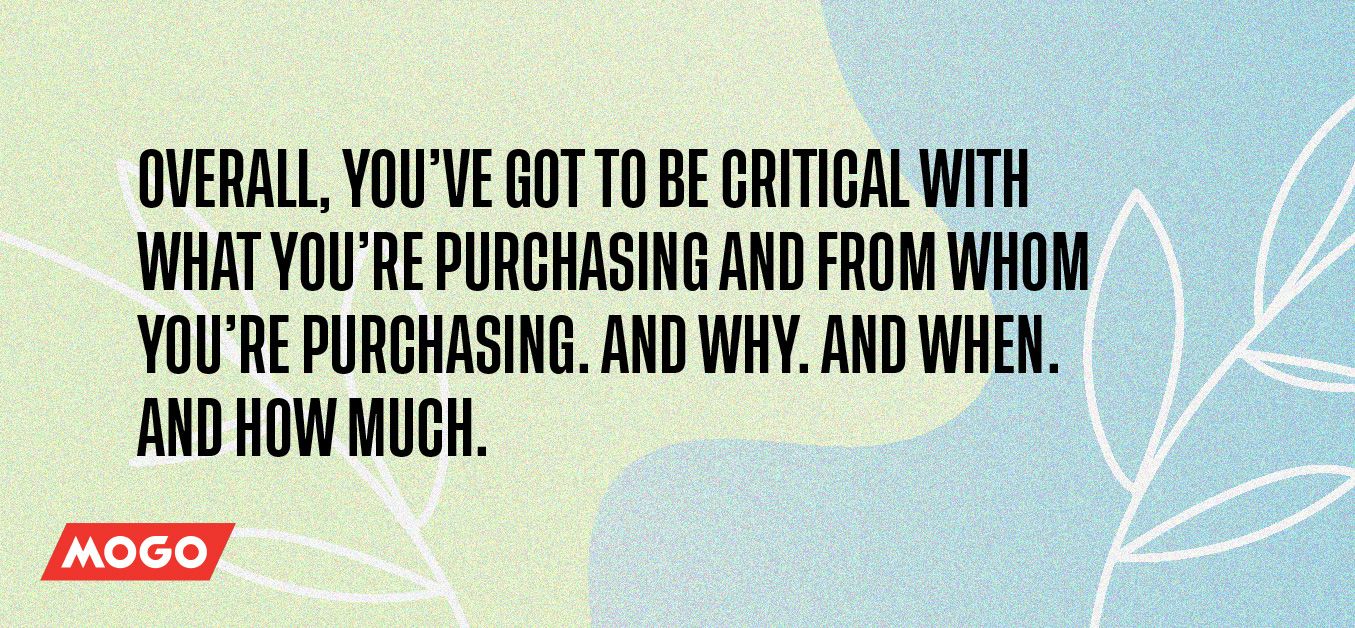
Overall, you’ve got to be critical with what you’re purchasing and from whom you’re purchasing. And why. And when. And how much.
Because the cogs of capitalism are working against you.
Social media and credit cards make an awful team. Everyone we follow on Instagram is likely being paid to sell us things. Credit cards (which are way too easy to access with browser autofill!) are literally designed to make you overspend. Those two things together make us into ravenous, insatiable consumers.
Personal care products are especially bad because they can zero in on our insecurities. So before you buy, be critical.
Bad for the planet. Bad for your wallet. Bad for your mental health.
Ask yourself: have you used up the products you’ve got in your cupboard? Do you need this new product? Which company produces it, and can they prove they’re committed to sustainable practices? Will this product make you healthier or happier, honestly?
Sometimes it can be tough to pass on buying a trendy new product (wild, eh?). But we’ve all got to start.
It may seem like buying a new serum before you’ve used your old ones is just a drop in the bucket, but eventually, enough drops make the bucket overflow.
Want to be part of the change? We’re leading the way in Canada by setting a new standard for corporate climate responsibility and we want you to get on board. There’s power in numbers, and we’ve got lofty goals.
Plant Trees With Mogo
When you do need to purchase a product, do it with the MogoCard. Why? For every tap, we plant a tree for you, for free. For more info on our Code Red initiative, click here!
Best of all, the MogoCard is free. In response to a recent survey of active MogoCard users, some respondents reported saving an average of $201 per month just by embracing the spend control that the prepaid MogoCard supplies.2
Save money, plant trees, contribute to a healthier, happier planet.
Who’s game? Check out the MogoCard today.
| GET MY FREE MOGOCARD |
Read next: 3 Things We Learned from the IPCC Report
This blog is provided for informational purposes only.
*Trademark of Visa International Service Association and used under licence by Peoples Trust Company. Mogo Visa Platinum Prepaid Card is issued by Peoples Trust Company pursuant to licence by Visa Int. and is subject to Terms and Conditions, visit mogo.ca for full details. Your MogoCard balance is not insured by the Canada Deposit Insurance Corporation (CDIC). MogoCard means the Mogo Visa Platinum Prepaid Card.
1-According to research conducted by Veritree Technology Inc. 500 lbs. is an approximate amount based on Above-Ground-Carbon (AGC) and Below Ground Carbon (BGC) sequestration estimates contained in several scientific research papers regarding the carbon sequestration of Mangrove trees (the “Research”). The Research contains various ranges for the rate of carbon sequestration per hectare of land. In order to arrive at the approximate amount of 500 lbs., Veritree triangulated data points from the Research regarding AGC and BGC sequestration estimates, and then converted those results into the approximate amount of lbs. per tree. An average Canadian emits approximately 42,000 lbs of CO2 in one year. Each tree will absorb approximately 500lbs of CO2 over its lifetime (approximately 25 years). For every purchase made with the MogoCard, a tree will be planted. If you used your MogoCard for 10 purchases each month, 10 trees would be planted. If 10 trees were planted every month for a year, that would be 120 trees, and those 120 trees would absorb a combined total of 60,000 lbs of CO2 over their lifetimes (25 years), making the average Canadian climate positive. Based on the most recently available data from 2019 and assuming future data follows a similar trajectory, there were approximately 17.79 billion transactions performed by Canadians on credit cards, debit cards, cash, prepaid cards and ATMs. 17.79 billion transactions divided by approx. 30.7 million Canadians aged 18 or older in 2019, results in an average of approximately 578 transactions per Canadian aged 18 or older in 2019. If 1 out of 5 Canadians aged 18 or older used the MogoCard, that would be 6.1 million Canadians aged 18 or older using the MogoCard (20% of 30.7 million). If each of those 6.1 million Canadians made 578 transactions, that would mean 578 trees would be planted for each of those 6.1 million Canadians, resulting in a total of approximately 3.5 billion trees being planted. 3.5 billion trees multiplied by 500 lbs. of CO2 equals 1.779 trillion lbs. of CO2 offset over the lifetime of the trees (approximately 25 years), which exceeds the approximately 1.609 trillion lbs. of carbon that Canada emitted in 2019, thereby making Canada’s 2019 carbon footprint climate positive. For more information on these statistics and Code Red Mode, see: Blog.
2-Based on an online survey of active MogoCard users by Mogo Inc. conducted between July 13, 2021 and July 16, 2021, with 1,446 respondents to a combination of multiple choice and fillable text box questions. 91% of respondents agreed that the MogoCard can help them better control their spending. 66.5% of respondents reported that they were spending less on discretionary spending now that they were using the MogoCard, with respondents reporting that they believed to have an average savings of $201 per month (based on 902 respondents who specified an amount and excluding 60 respondents who did not specify any amount).